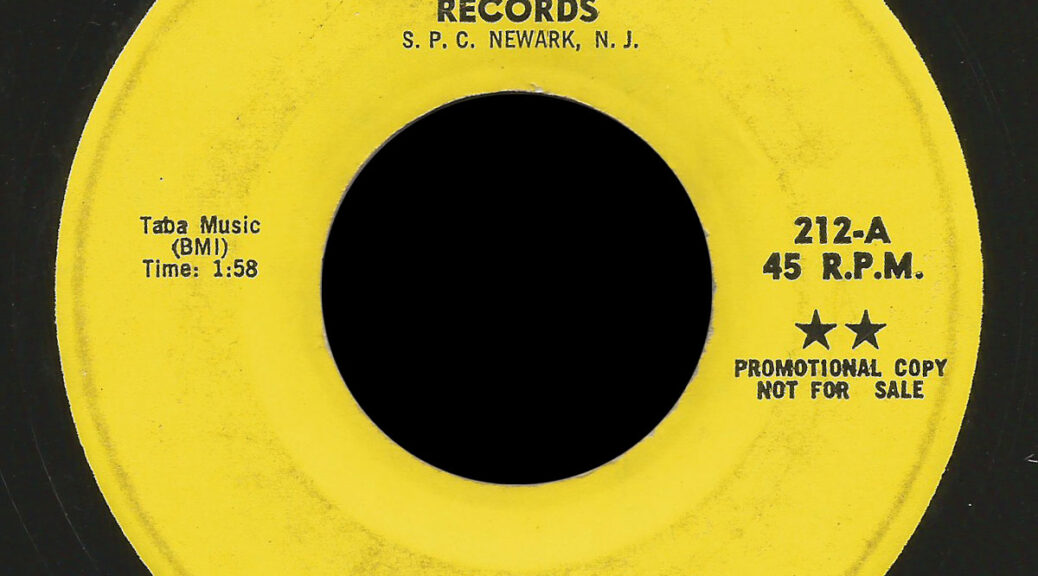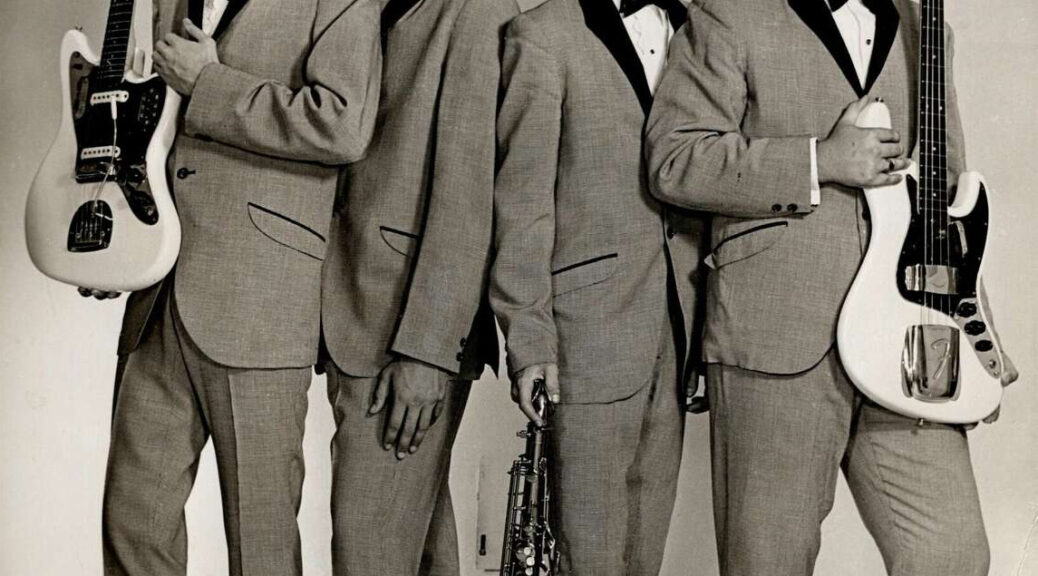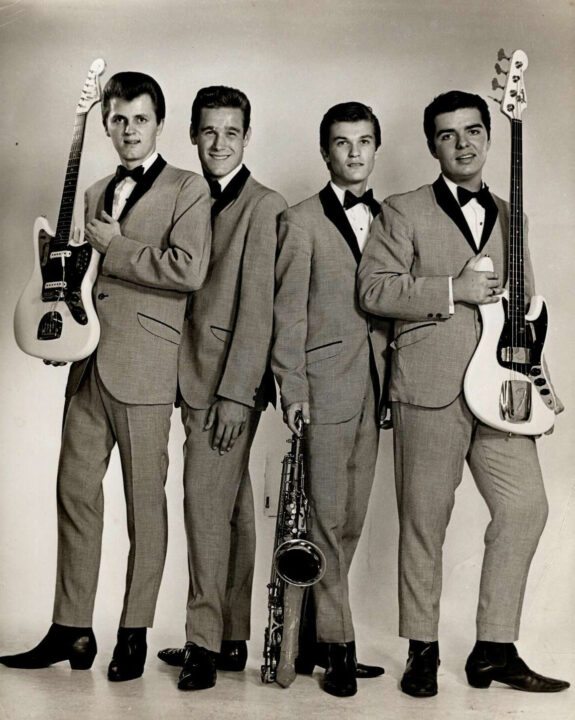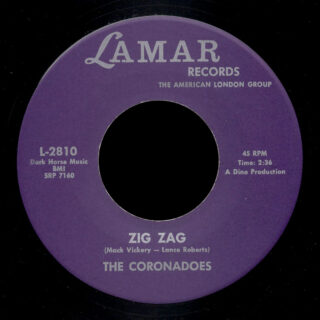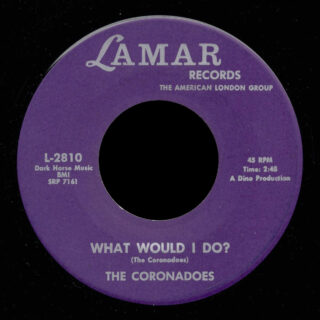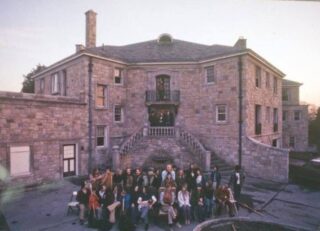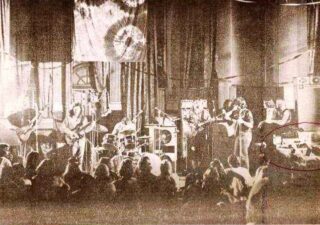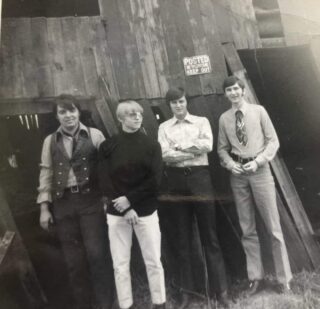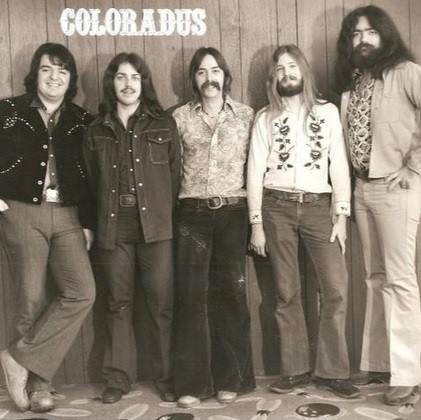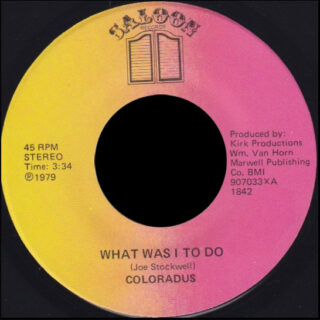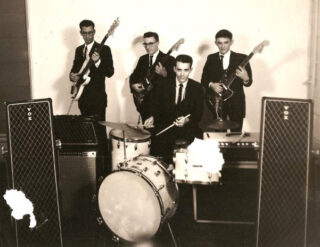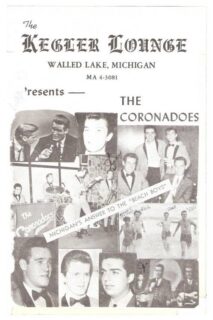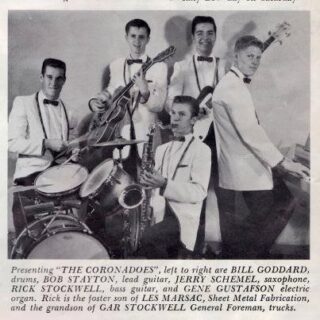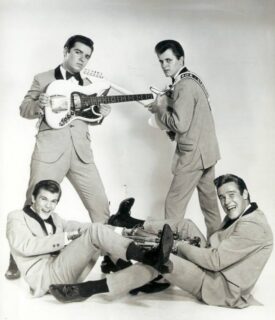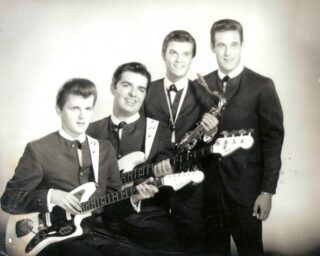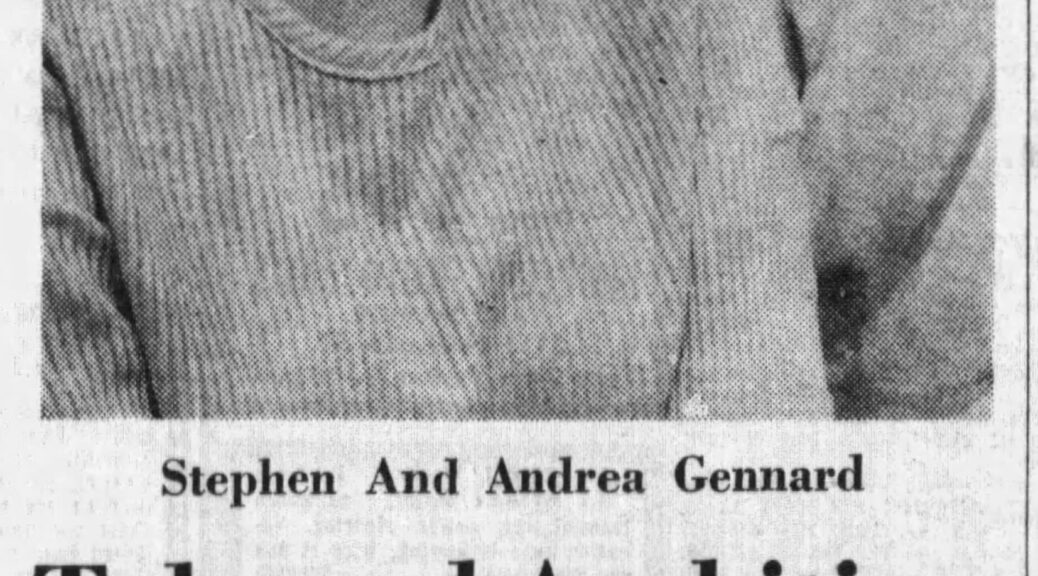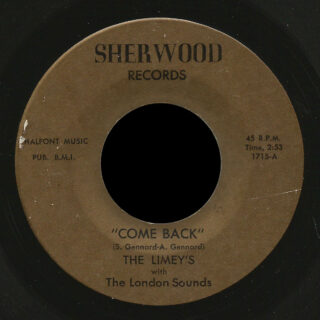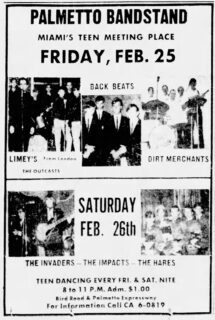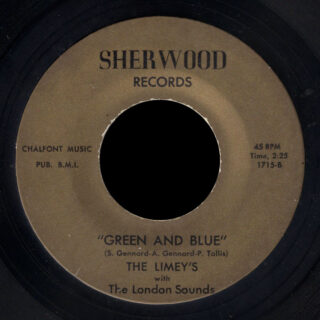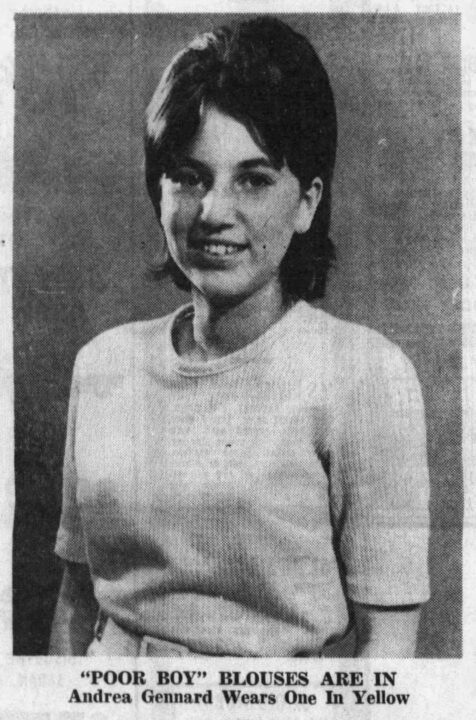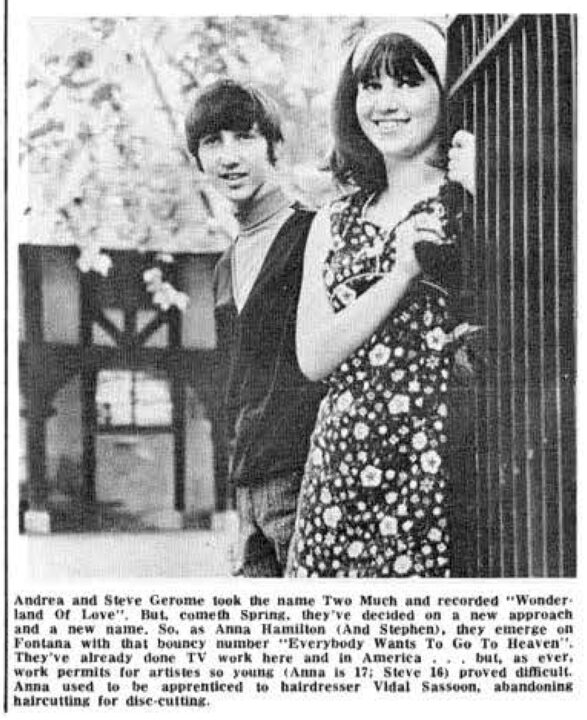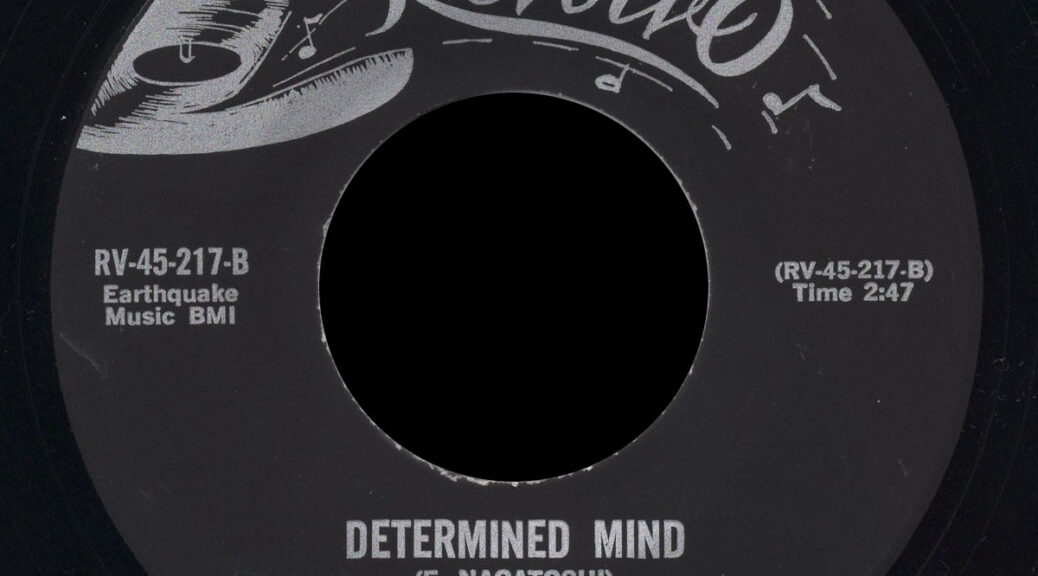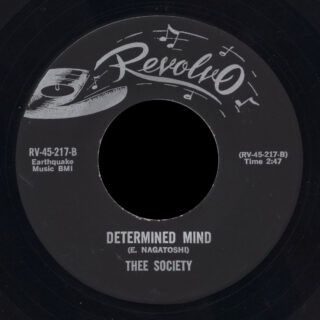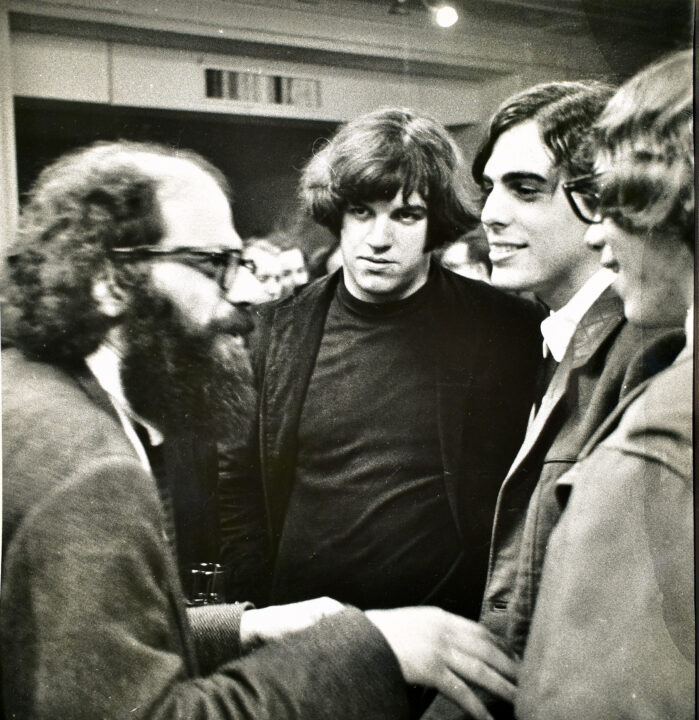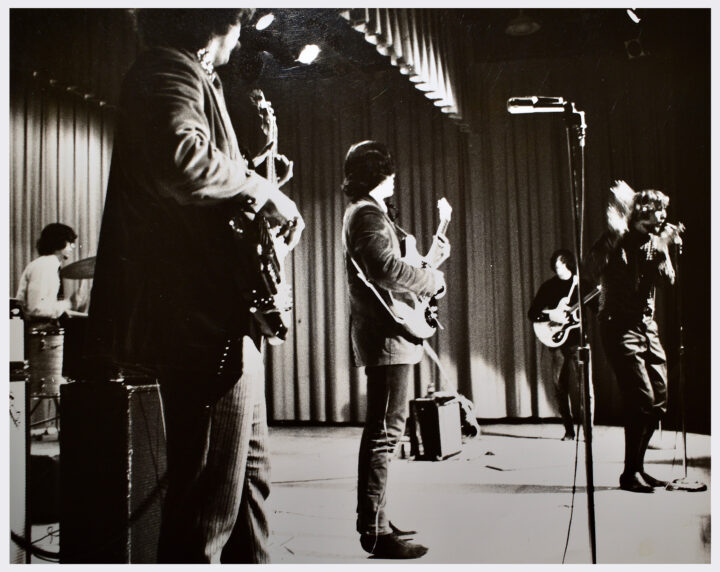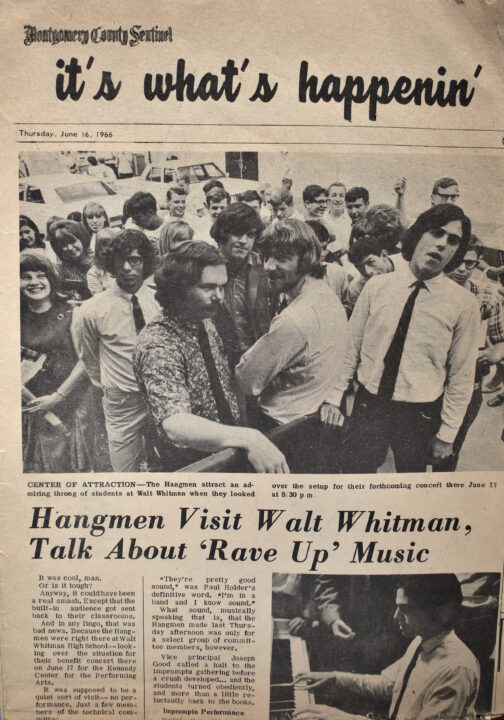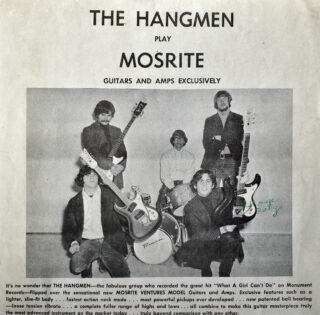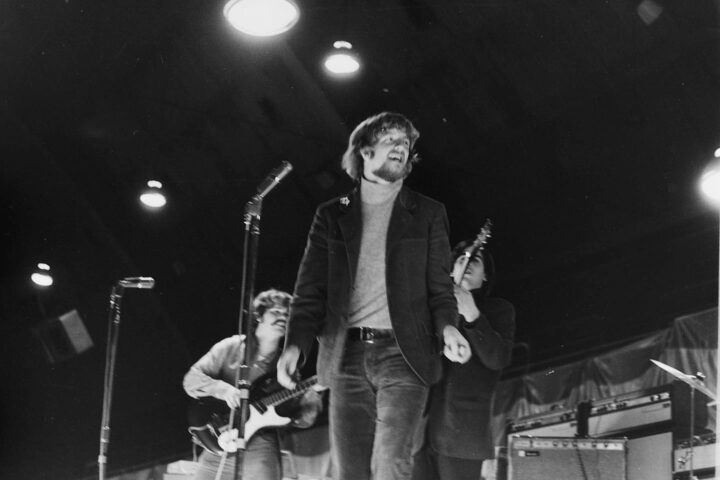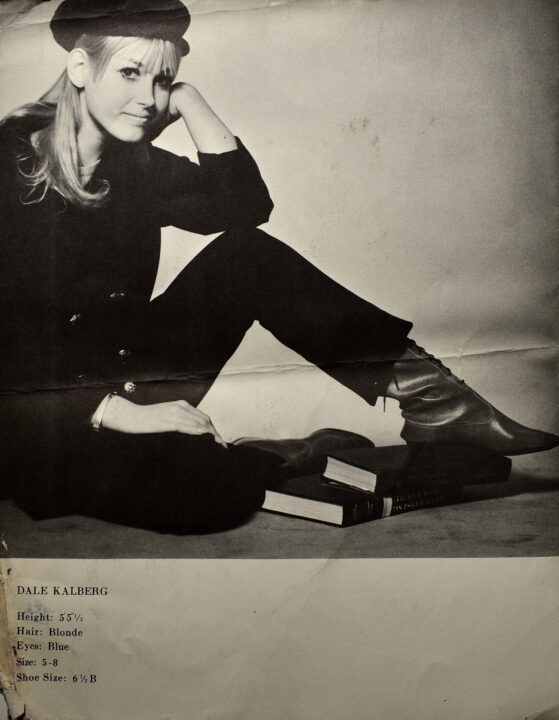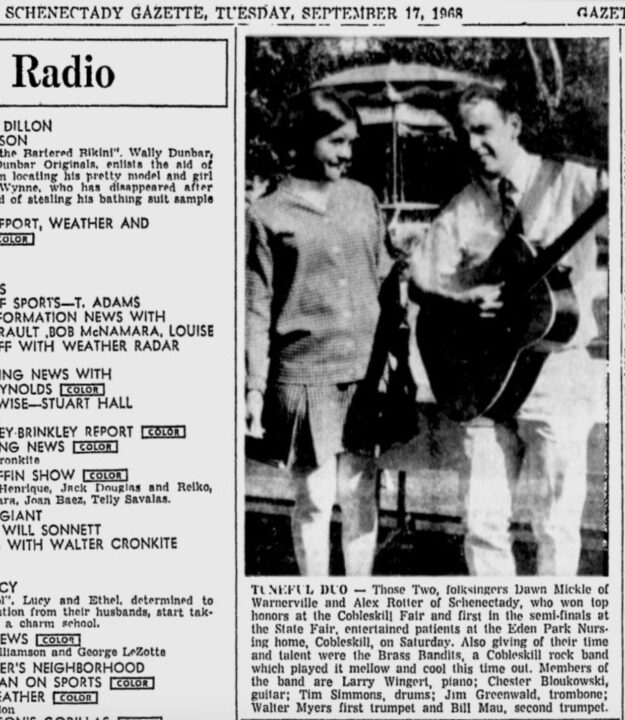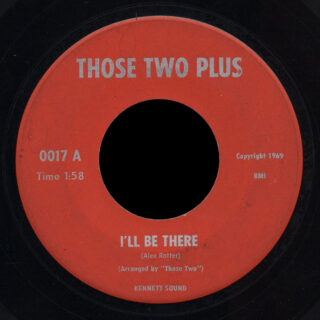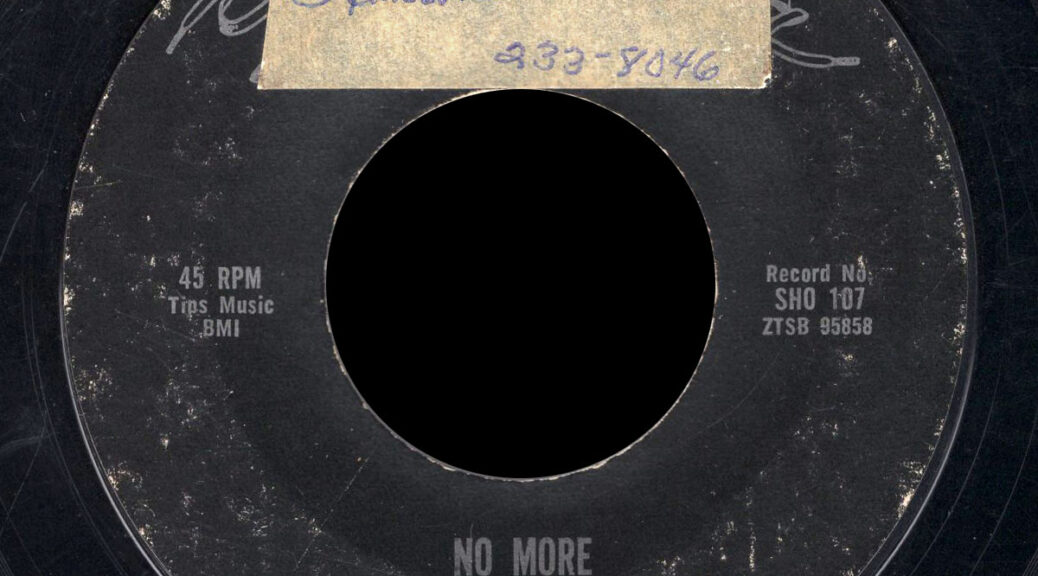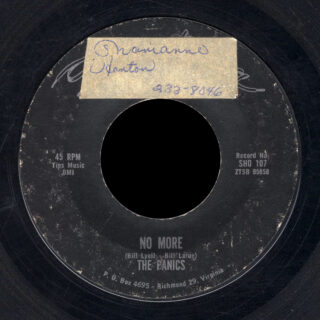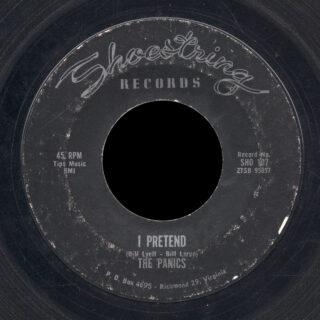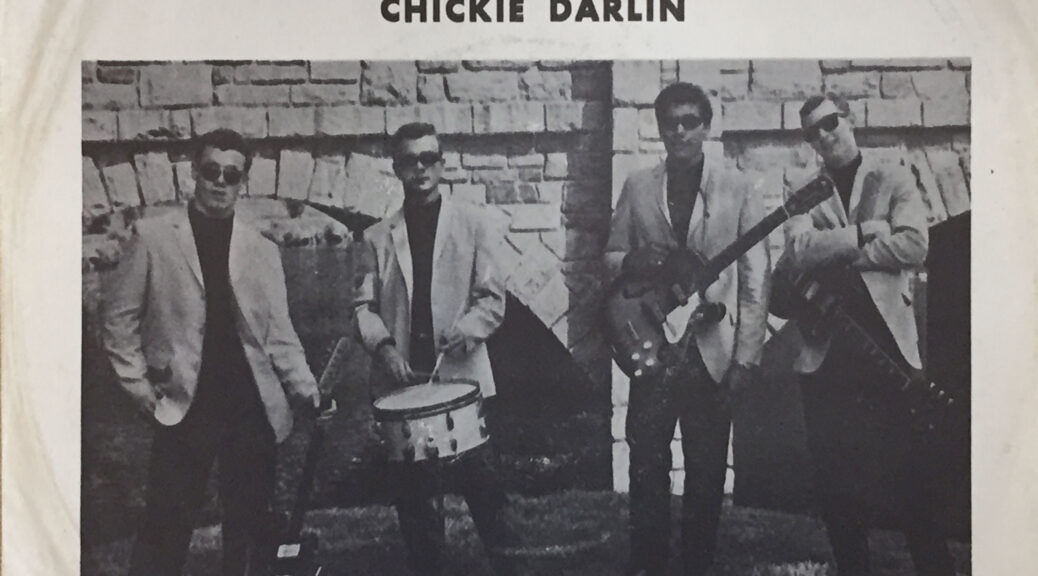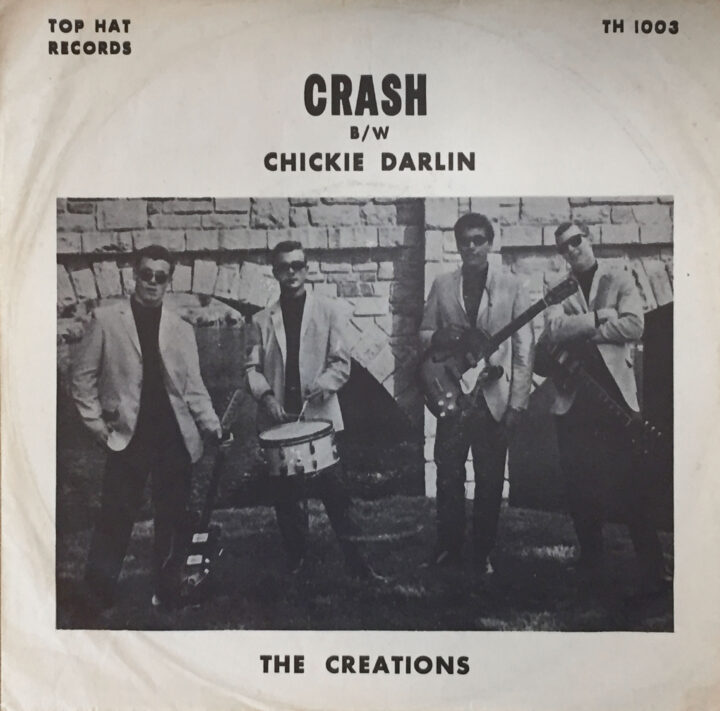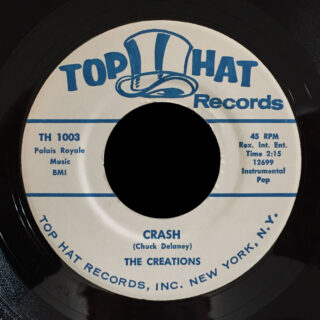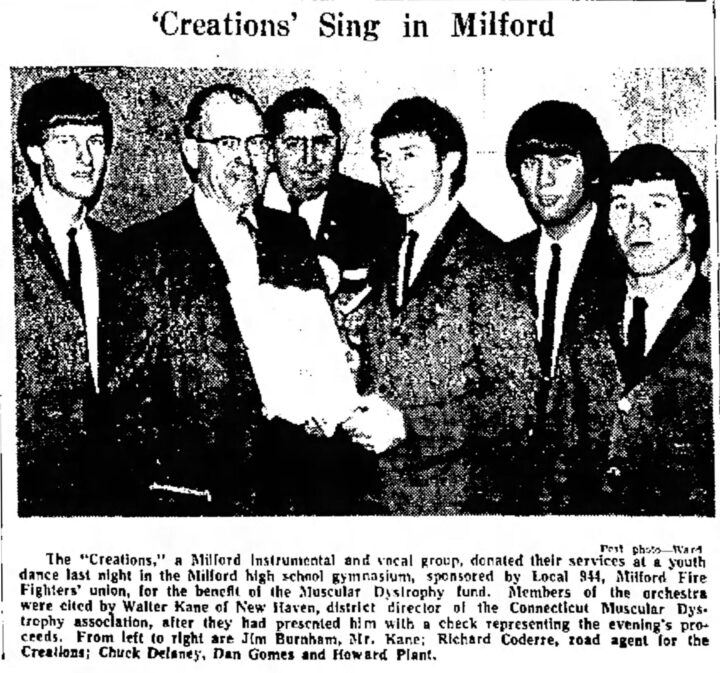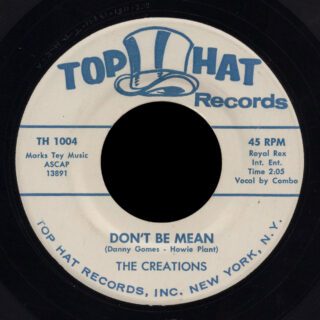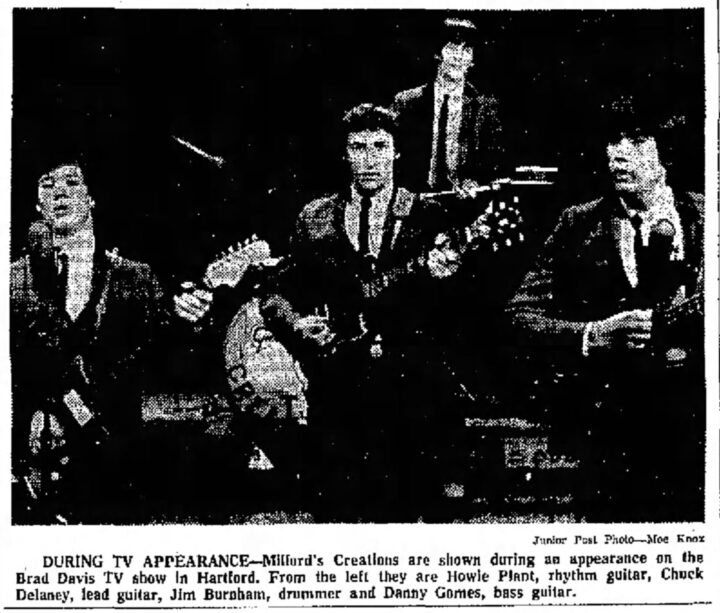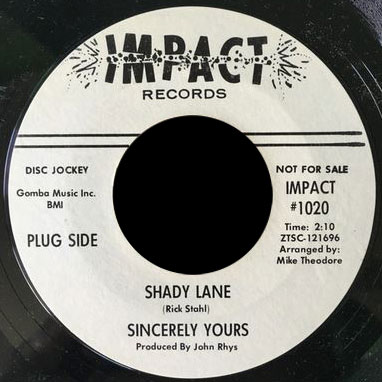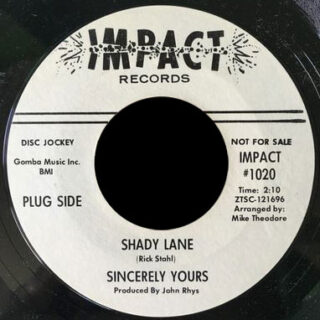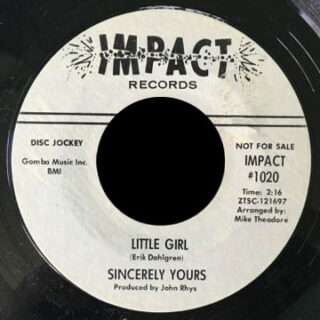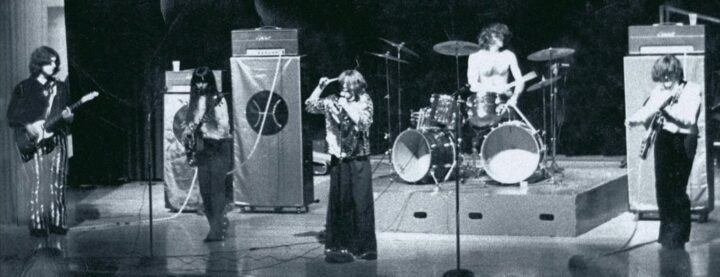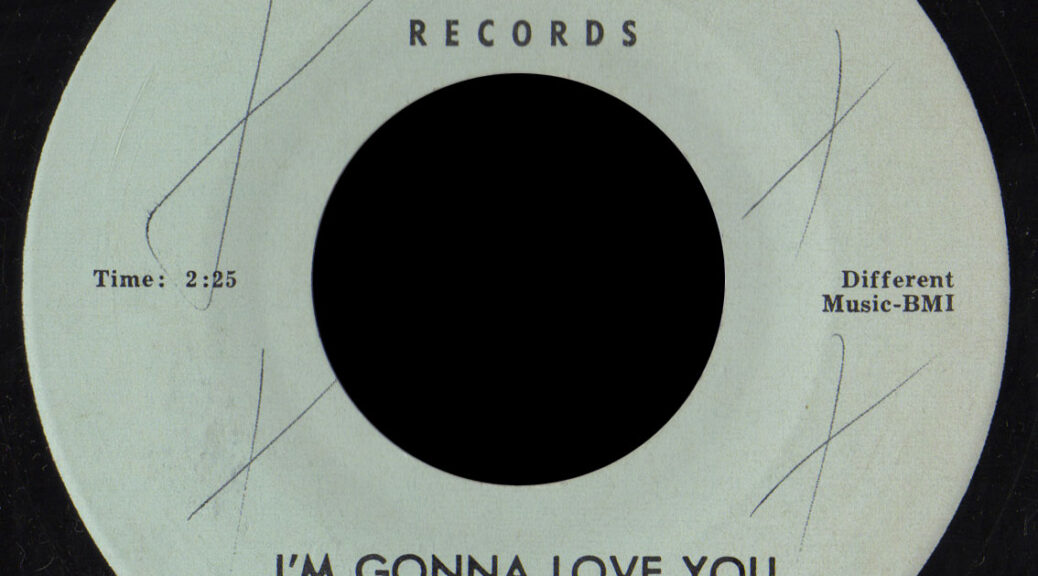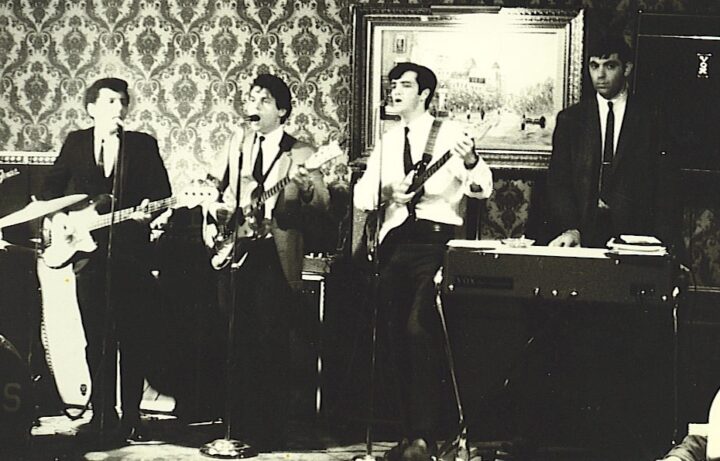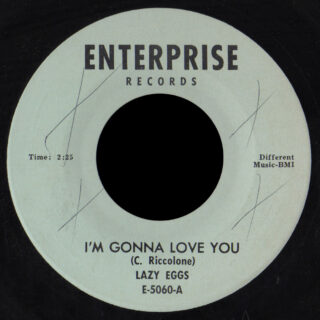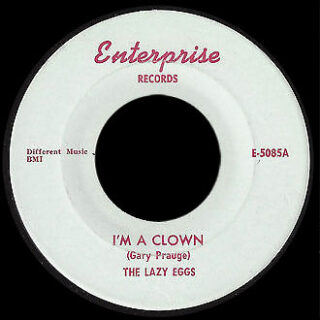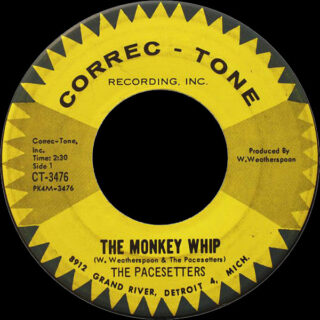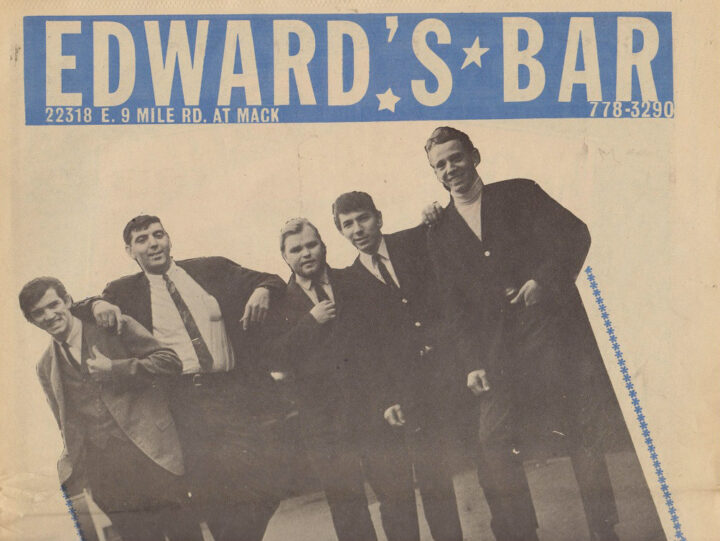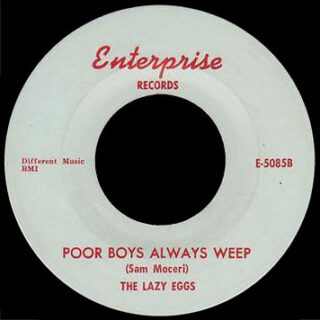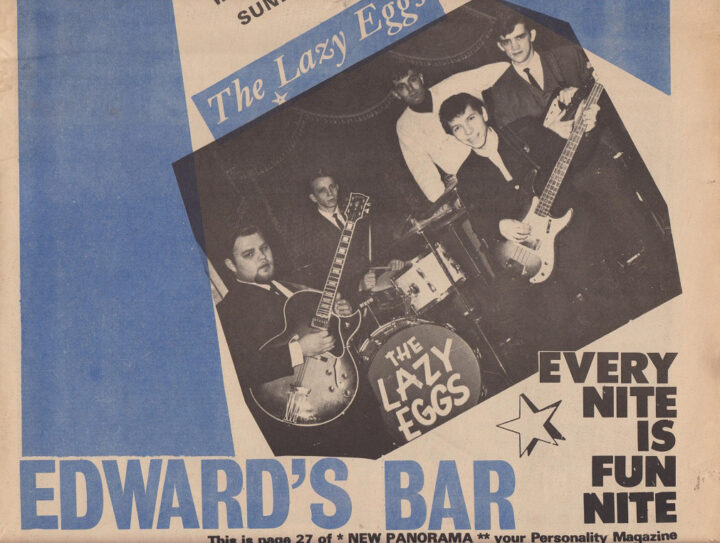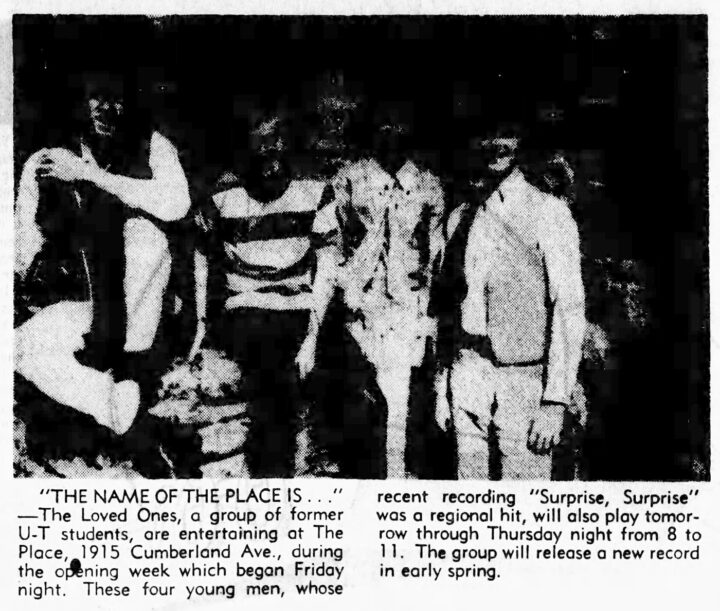
Terry Johnson – guitar
Barry “Byrd” Burton – guitar
Doug Graham – bass
Mike Coyner – drums
Alan Copeland – drums (replaced Mike Coyner in fall of 1966)
Ranse Whitworth – guitar (replaced Terry Johnson in late 1967)
Dorian Rush – drums (replaced Alan Copeland in February, 1968)
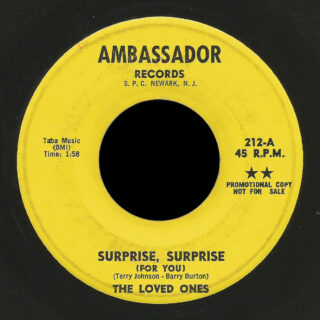 In June of 1966 released a great 45 of two original songs, “Surprise, Surprise (For You)” (written by Terry Johnson and Barry Burton, Tuba Music) b/w “Another Time or Place” (by Terry Johnson, Kasen Music) on Ambassador Records TIF 212. The Loved Ones recorded the songs at Bradley’s Barn studio in Nashville.
In June of 1966 released a great 45 of two original songs, “Surprise, Surprise (For You)” (written by Terry Johnson and Barry Burton, Tuba Music) b/w “Another Time or Place” (by Terry Johnson, Kasen Music) on Ambassador Records TIF 212. The Loved Ones recorded the songs at Bradley’s Barn studio in Nashville.
The band’s manager went to New York to shop the single, and secured a deal Ambassador, a label from Newark, New Jersey.
An early version of the group, under perhaps a different name, had started a year or two earlier, playing a VFW hall in August 1964. Terry Johnson played guitar; Doug Graham was playing a Fender Rhodes Piano Bass. Other early members included Bill McMakin on acoustic guitar, and an unknown drummer, perhaps Jim Bible or Ed Hagood. At some point they were replaced by Barry Burton and Mike Coyner.
The Loved Ones made a demo in January 1966, “I Love Her More”, cut at Startime Studios, owned by Jim Clayton, in January 1966. WKGN broadcast the song in February, but it has since become lost.
On August 28, 1966, the News-Sentinel reported on their summer residency in Greenwich Village, a time I would like to know more about:
The Loved Ones’ Returning to Knox
A local long-haired singing group, which has been playing in New York’s Greenwich Village all summer, will return to Knoxville Saturday at the Civic Coliseum.
“The Loved Ones,” all U-T students when they organized last January, will sing before about 5000 at the Knoxville invitation Teen Board Dance.
The group, Terry Johnson, Barry Burton, Doug Graham and Mike Coyner, will be based in Knoxville this fall when Terry returns to school at U-T…
Three – Terry, Doug, and Barry – are from Rogersville, and Mike from Chattanooga.
I looked for notices of the Loved Ones playing in Greenwich Village, but so far have not found them.
After this article appeared, Alan Copeland, originally from Memphis, replaced Mike Coyner on drums.
The Loved Ones and their manager Bill Baillie helped open a Knoxville nightclub called The Place.
The Knoxville News-Sentinel reported on January 22, 1967:
The Place, 1915 Cumberland Ave., which opened Friday night … has an unique atmosphere all its own. The L-shaped room, large enough for 450 people, features black walls and white flourescent designs. Several large revolving rainbow-colored lights set the walls and floors to dancing. About 75 small tables dot the two ends of the room. Benches with narrow tables jutting out from them line the walls, creating seats for about 270 …
The Loved Ones are providing the opening week entertainment. Other combos scheduled include the Group from Memphis, the Playboys from Chattanooga, and Knoxville’s Jay, Jami, and the Soul Survivors.
Their recent recording, “Surprise, Surprise” was a regional hit … the group will release a new record in early spring.
On July 2, 1967, the News-Sentinel ran an item “Two Knox Groups Cut Pop Discs”:
Jay Henderson, a Rule Hugh School graduate, and Sandy Richards, a Central High graduate, have a record out on Spot Label of Johnson City, which began air play last week. They call themselves “Jami and Jay” and are backed by a Knoxville combo, “The Soul Survivors.” The number one side of the record is “I’m So Lonely” and the flip side is “I Know I’m Not Much.”
Another Knoxville group, “The Loved Ones,” has recorded 12 original songs for Roulette Records, a national company in New York. Terry Johnson, leader of the group which met at U-T, wrote the songs, two of which are planned for release within two weeks. Others in the group are Doug Graham, Barry Burton, and Alan Copeland.
I’m not sure if the band actually did cut “12 original songs for Roulette Records”, or what happened to those recordings.
On Friday, September 1, 1967, the Loved Ones opened for the Young Rascals at the Knoxville Civic Coliseum.
Ranse Whitworth replaced Terry Johnson in late ’67, and Dorian Rush replaced Alan Copeland in February 1968.
The band released their second 45 on Brookmont Records 556, “Country Club Life” (by B. Russell, B. Cason), “Together, Together” (W. Rabideau, D.J. Chalmers), produced by Redell Productions. CashBox reviewed it on September 14, 1968: “social commentary about the country club-commuter set is delivered in blues style … FM play could alert Top 40’s to its sales potential.”
[Walter Rabideau and David-John Chalmers wrote both sides of the only other release on Brookmont Records, by Tomorrow’s Children “Take a Good Look” / “Rainy Corner”, and both would go into the Farm Band in Summertown, Tennessee.]
I don’t know how or when the group broke up.
In 1972 Byrd Burton formed the Amazing Rhythm Aces (with Jeff Davis of Indiana group the Nomads, whose “Coolsville” on Skoop is covered on this site).
The Loved Ones had at least one reunion, with Byrd Burton, Terry Johnson, Ranse Whitworth and Mike Coyner.
Several of the members have passed away: Dorian Rush at the age of 20, Doug Graham in 2004, and Barry “Byrd” Burton in March of 2008.
—–
Steve Hostak
One 1967 photo shows the Loved Ones in Nashville’s Bradley’s Barn studio with Steve Hostak. Hostak wrote “Summer Boys” which Judy Eggers cut at Metro Recording in Knoxville, released with “Life of a Fool” (by E.J. Roberts) on Metromaster M-166.
In the 1970s, Stephan Hostak played guitar on albums by James Talley, Tracy Nelson and others, and did some writing and arranging work. I’d like to know more about Hostak’s connection with the Loved Ones, and his other early studio work.

